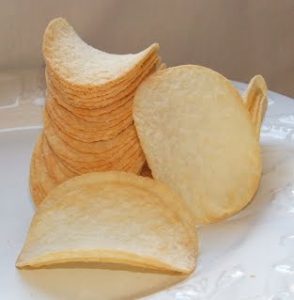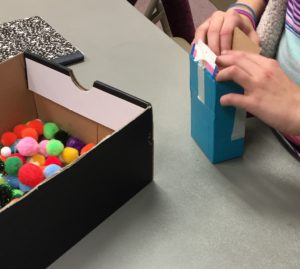Last year was the first year I participated in the Pringles Challenge with 90+ fourth graders and their five teachers. It was one of the best STEM projects of the year. The Pringles Challenge is now accepting participants for this year: https://sites.google.com/site/newpringleschallenge/
 Challenge: Students must design a unique package that will allow a SINGLE pringles chip to mailed safely through the United States Postal System.
Challenge: Students must design a unique package that will allow a SINGLE pringles chip to mailed safely through the United States Postal System.
Process: Students can work in groups or individually to design their package. We started with the video on the website that shows the rough ride a package take when it goes through the postal system and had a class discussion about the importance of protecting the chip. The students had creative ideas across the board BUT then they learned about the scoring process.
Scoring: (This part is a bit complicated for elementary school students but we took the time, taught it multiple ways, and they got it!)
(Taken directly from website)
Three measurements must be collected in order to score a package for the Pringles Challenge.
- Mass – measured in kilograms to at least 3 significant figures
- Volume – measured in cubic centimeters to at least 3 significant figures
- Intactness score of the chip as determined by the evaluating school, according to the chart below
| Intactness | Description | Chip Score |
| Perfectly Intact | Like it just left the factory | 100 Points |
| Slightly Damaged | Cracked, but still in one piece | 50 Points |
| Chipped Chip | Broken along the edges, but less than 5 pieces | 10 Points |
| Split Chip | The chip is broken into two fairly equal pieces | 10 Points |
| Significantly Damaged | Chipped and/or cracked into less than 20 pieces | 5 Points |
| Pringle Dust | Too many pieces to count (more than 20) | 1 Point |
Overall Score
The overall score of the package will be used to compare packages. As your goal is a high intactness score coupled with a small mass and volume, a higher overall score is better. The formula for calculating the overall score is as follows:
Overall Score = Intactness Score
(Mass in kg x Volume in cc)
Example:
a) A perfect chip = Intactness of 100
b) Mass = 256 grams or 0.256 kg
c) Volume = 250 cc (2.5 x 10^2)
Overall Score = (100/(.256 x 250)) = 100/64 = 1.56 (when rounded to 3 significant figures)
Process Continued: Before designing their packages, I gave students random boxes of all different sizes and asked them to find the score of the box. Box sizes ranged from small OTC medicine size to large men’s shoe boxes. They measured, weighed, and calculated their scores as if they had a fully intact chip, a chipped chip, and Pringle dust. We recorded all the scores on the board and evaluated the importance of size, weight, and intactness. Students then worked in teams to plan their boxes, create, and test. There was a lot of throwing, kicking, and banging just to make sure their chips would stay intact.
Students then worked in teams to plan their boxes, create, and test. There was a lot of throwing, kicking, and banging just to make sure their chips would stay intact.
 On the day I had to mail 25 odd shaped boxes, the local post office was NOT happy with me. In fact, they refused a box completely saying the shape was too obtuse and unacceptable so be sure to follow USPS rules and regulations.
On the day I had to mail 25 odd shaped boxes, the local post office was NOT happy with me. In fact, they refused a box completely saying the shape was too obtuse and unacceptable so be sure to follow USPS rules and regulations.
You can see last year’s scores here. It’s hard to tell the winners because there are a bunch recorded wrong but I worked it out, if you remove all the schools with the wrong info we have teams that placed 21st, 22nd, and 40th.

